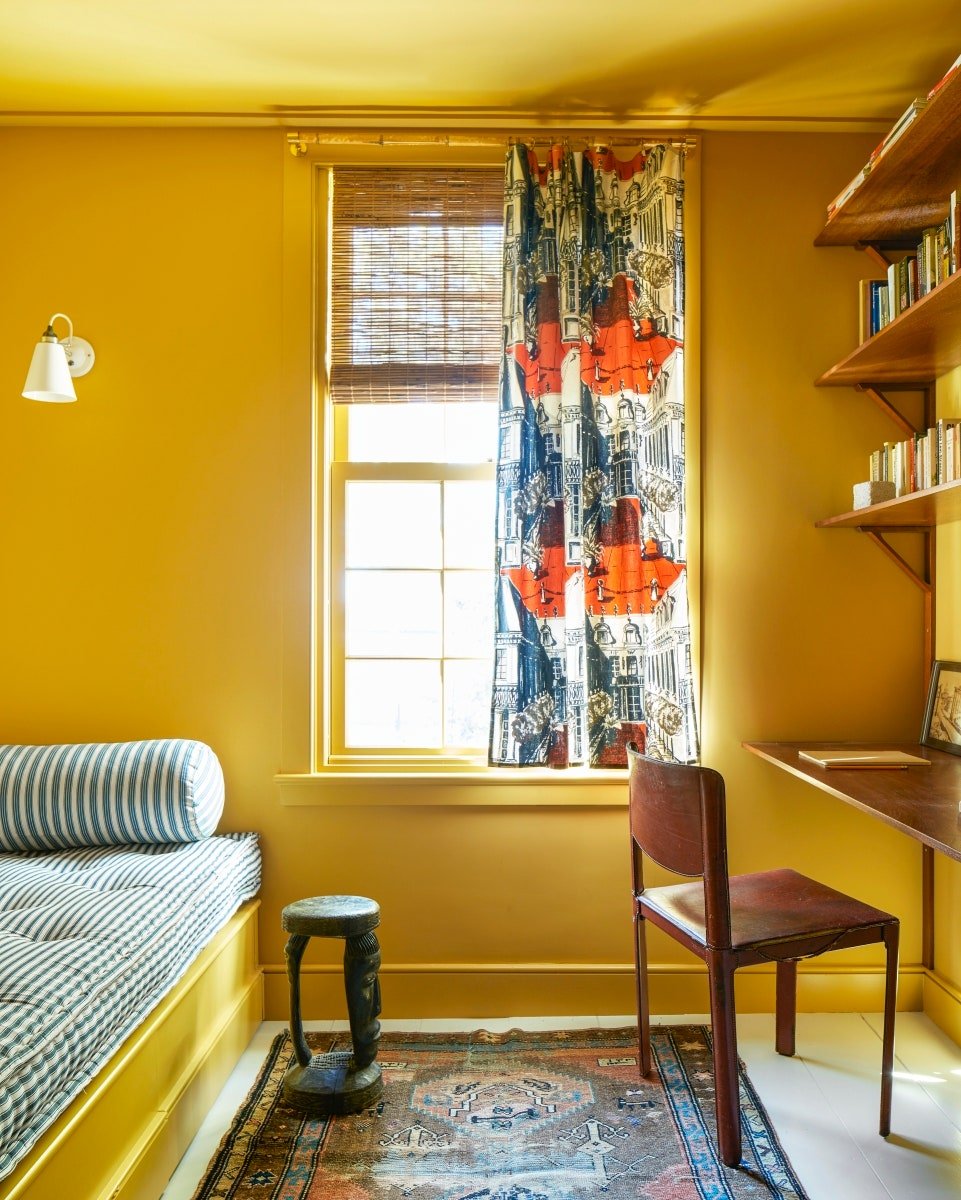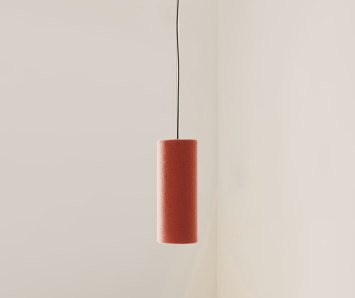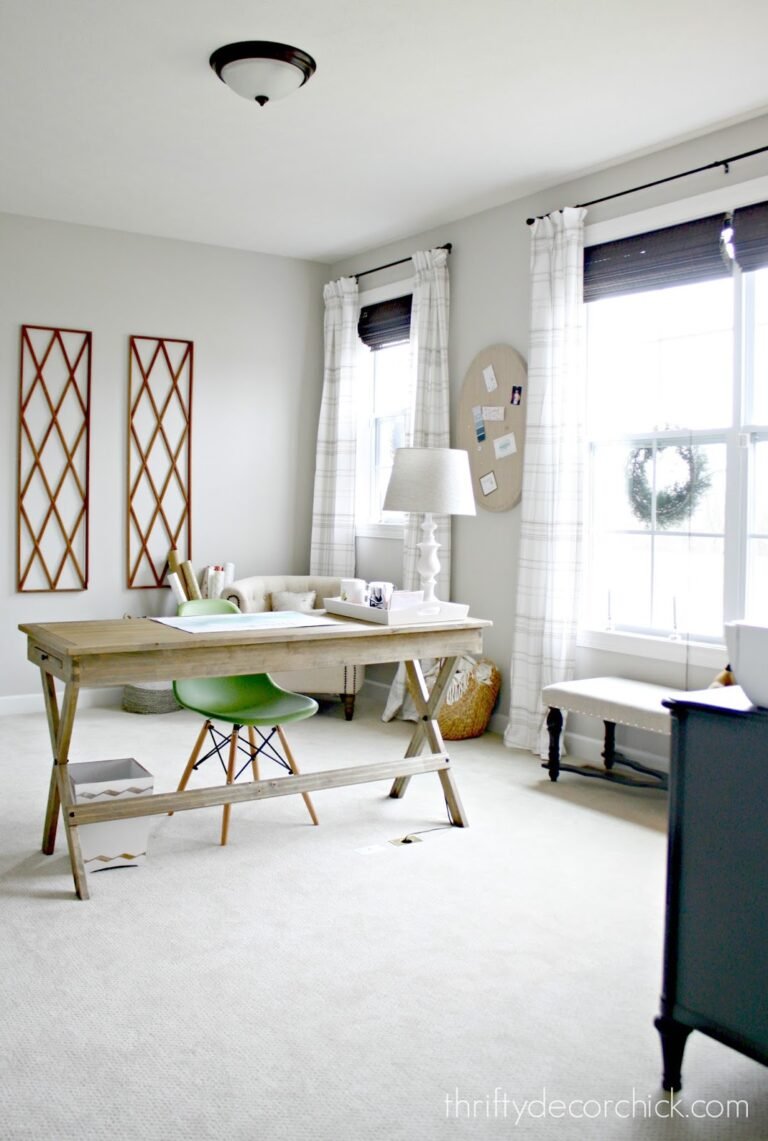AD PRO’s Color Trends Report
Other designers play up contrast for millwork, choosing a color wheel opposite to the hue on the walls. “Along with the rich and boldly colorful patterns in wallpaper we love to use, for the surrounding baseboards, crown molding, [and] door/window trim clients are open to us using one of the colors in the wallpaper as the paint color of the millwork,” explains the Memphis-based designer David Quarles. “For my higher-end budget clients, I’m seeing a rise in jewel tones combined with black or accompanying deep colors as a grounding element.” For a recent project, Quarles used the sage-green Lucille wallpaper from his collaboration with Chasing Paper and painted the baseboards, trim, cabinetry, and casings in a complementary burgundy.
With colorful architectural trim on trend again, could we be in the midst of a Queen Anne revival? When the 2024 colors of the year find their niche in next year’s projects, time will tell. —Stephanie Sporn
Get the Look
Can Artificial Intelligence Help Designers See Color in a New Way?
Emerging technologies are being harnessed for new design tools. But what are the algorithm’s limits?
Artificial intelligence is revolutionizing the creative process. You can digitally redesign a living room with the click of a button. You can ask an algorithm to whip up whatever style mash-up your heart desires. Midcentury-modern meets Barbiecore—why not?
But what happens when emerging technologies start to meddle with the wildly subjective world of color? That landscape is already shifting as designers explore new tools to change the way they imagine and work with hue. Colormind, for instance, uses deep learning to pick up palettes from photographs, movies, and popular art then helps you generate your own. Adobe’s Generative Recolor lets you recolor an illustration or pattern using nothing but text prompts. Want to build your “dream color” by talking to your computer? Try Sherwin-Williams’s Speaking in Color. And the aptly named Color Moods helps you test how color pairings impact state of mind.
Whether you are an interior designer, graphic designer, product designer, or even set designer, the implications of these technologies could be huge. The internet, after all, is your kaleidoscope. But all tech has its limits. AD PRO spoke with interior designers and color specialists for their insights on when you should trust an algorithm with design decisions and when an old-fashioned human take is the better choice.
Let’s start with the obvious: Technology is a time-saver. “It helps us be more creative because we can concentrate on the current process and deal with it in a short period of time,” says Ukrainian designer Artem Kropovinsky, the founder of New York–based studio Arsight. Case in point: Kropovinsky was recently designing a custom wallpaper pattern for a client. With his vector file in Adobe Illustrator, he was able to use Generative Recolor to experiment with various color schemes until he achieved just the right shades. “If the interior designer has enough experience, they can do it by themselves,” he says. “But it’ll take much more time, and of course there’s a human factor that AI doesn’t have.”
Carolyn Ames Noble, founder of the Atlanta-based firm Ames Design Collective and former chair of the American Society of Interior Designers, says that having color guides like Coloro or Sherwin-Williams’s color palette integrated into Revit also buys her time. “We can spend more time on the design and the design intent and less time tracking down the color and manually inputting it,” she says. The same applies to the kinds of 3D models that manufacturers create for design programs like Revit. “I will admit there are times if somebody doesn’t have a Revit file, we will not use their furniture,” Noble says. “It’s tough to say that out loud, but when you’re using that drawing as communication, we need the technology tool to help support our design vision.”
Both Noble and Kropovinsky agree that AI tools can help designers better convey ideas to their clients. During concept design, instead of mocking up a render to articulate the styling and aesthetic you think your client wants, Noble suggests using Adobe Firefly to generate an image within seconds—“and I mean seconds,” she says—to quickly get client feedback. As the designer notes, Firefly, which includes the Generative Recolor tool, is still in beta and should be used only during the early design phases to ensure the client doesn’t latch onto a specific detail instead of looking at the bigger picture.






